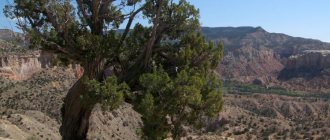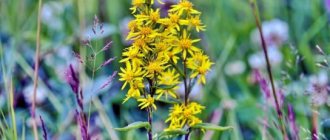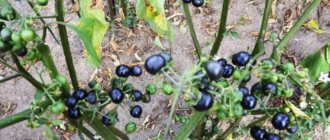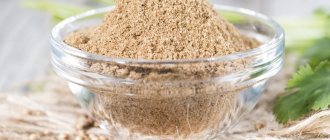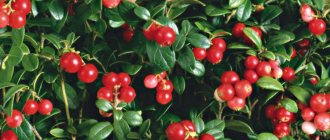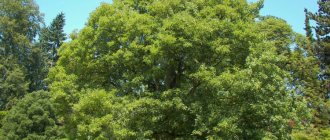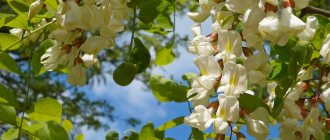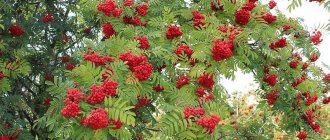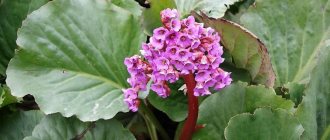angustifolia is a species of deciduous shrubs or low trees, up to 10 m high, of the Elaeagnus genus of the Elaeagnaceae family.
The crown of the tree is spreading, with shiny brown-red bark and spines, which reach a length of 3 cm. The trunk is curved. Young shoots are silvery-pubescent with abundant scaly hairs. Externally, the tree resembles willow and sea buckthorn.
The leaves are linear-lanceolate, oval, with petioles 5-8 cm, narrowed towards the base, pointed, greenish-gray above, white-silver below from the scales covering the leaf.
Flowers are up to 1 cm in length, solitary, very fragrant, located in the axils of the leaves; silvery on the outside and orange-yellow on the inside, containing a lot of nectar. The plant blooms for 15-20 days in June.
The fruit is a drupe about 1 cm, ovoid-spherical or oval, reddish-yellow with a silvery-white sweetish pericarp. The fruits ripen in August-October.
The root system is deep. It blooms and bears fruit from 3-5 years of age.
What it looks like and where it grows
China and North America are considered the homeland of the common or angustifolia sucker. In ancient times, magical properties were attributed to the plant. It was believed that the bush rejuvenates the body and gives strength.
The height of the plant reaches 4 m. The leaves have a silvery sheen. The lush crown determines the presence of decorative properties. The plant is drought-resistant. The shrub prefers saline soils. It produces many adventitious roots that can adapt to almost any soil. The common sucker is undemanding to air purity, but it does not tolerate frost.
The shrub is characterized by rapid growth and gradual curvature. It propagates both by cuttings and by cuttings and seeds. The trunk is covered with spines, which are not found in cultivated species.
The flowers of the common oleagin are small in size. Their diameter does not exceed 1 cm. The flowers are located on rather short stalks. The shrub is cross-pollinated by insects. During the flowering period, the aroma can be felt from afar.
The fruits of the common oleaster are represented by dry false drupes, which are distinguished by their oval shape. Their length can reach 2 cm. The berries include a mealy pulp of a yellowish tint. The taste of the fruit is sweet. The berries are juicy and slightly astringent.
It is noteworthy that the fruits of the oleaginous angustifolia are formed through the ovary and the perianth. Its lower part grows, becoming fleshy. Then it covers the ovary.
The berries of the common oleaster are considered the most valuable part. They are distinguished not only by their taste, but also by their beneficial properties. The fruits retain their valuable substances for four months. Dry berries are added to porridge and bread. They are placed in decoctions and infusions intended for preventive and therapeutic purposes.
The common or narrow-leaved sucker lives about 65 years
The plant can be found in Russia, Kazakhstan and Central Asia. The shrub prefers steppes and river banks.
Growing
Eleven angustifolia is drought-resistant, practically does not suffer from hot winds, and is light-loving. The heat resistance of the plant is amazing; damage to the tissues of young trees in the spring occurs only at +40-45 ° C, and in the summer only at more than 55 ° C! It is quite frost-resistant, tolerates temperatures down to -25 0C without damage.
It grows quickly, reaching a height of 2.5 m in 3 years. Very durable - in Crimea there are 100-year-old specimens in good condition.
It is also unpretentious to soils, tolerates significant salinity, and grows successfully on dark chestnut, light chestnut and chestnut-solonetz soils. Thanks to nitrogen-fixing bacteria on the roots of the nodules, which improve the soil, sucker is able to grow in extremely poor soils. When the trunk is covered with sand, the plant forms abundant adventitious roots. Perfectly tolerates soot, dust, gas.
Propagated by seeds, cuttings, layering, does not produce root suckers. The best time for sowing is the beginning of autumn. When planted in groups, the distance is 2.5-3 m, in hedges 1.2-1.6 m. It is rarely affected by pests and diseases.
Chemical composition
Elf angustifolia, the photo of which is located above, has beneficial properties. The following parts of the plant are used in folk medicine:
- leaves;
- fruit;
- flowers;
- resin;
- bark
We recommend reading: River Gravilate: medicinal properties and contraindications
The raw materials of the common or angustifolia oleaster include substances beneficial to health:
- carbohydrates;
- proteins;
- organic acids;
- potassium and phosphorus salts;
- essential oil;
- tocopherol;
- vitamin C.
The usefulness of the plant's fruits
The fruits of the tree have a round-elliptical shape, yellowish, drupe-shaped, about 1.5 cm in length, edible. Ripening occurs in August-October, fruiting begins at 3-5 years of age.
The sugar content is about 60% (including fructose and glucose), proteins - more than 10%, and the fruits also contain potassium, phosphorus, vitamin C, and organic acids. Tannins give the fruits an astringent taste, which weakens during long-term storage or heat treatment. The fruits are suitable for fresh consumption and children love them very much. Kissel and compotes made from these berries have a healing effect, especially for intestinal disorders. Wine made from these “olives” is characterized by a specific taste. On an industrial scale, alcohol is produced from the fruits, the yield of which from 1 quintal is 12 liters.
Useful properties of Eleven angustifolia
Products made from medicinal plants produce the following effects:
- astringent;
- antibacterial;
- expectorant;
- diuretic;
- antiviral;
- anti-inflammatory.
The fruits of the medicinal bush improve memory and facilitate the progression of malaria. Berries are prescribed for pathologies of the cardiovascular system due to their tonic and restorative properties.
Important! Leaves and flowers are also used for medicinal purposes.
Methods of preparation and use
Various medicinal formulations are made from raw materials. In particular, infusions and decoctions are made based on the leaves. Aqueous solutions help with the following diseases:
- ARVI accompanied by fever;
- rheumatism;
- gout;
- radiculitis.
Important! The drugs are intended for both internal and external use.
A decoction of the fruits of the oleaster angustifolia is recommended for use for diarrhea.
Description
Evergreen (like myrtle) or deciduous (hazel) trees or bushes. Most varieties are thorny. The leaves are short-petiolate, silvery with scales or felt-like with star-shaped hairs.
Flowers can grow singly or in bunches. Their shape is four-lobed, tubular-bell-shaped. Without petals with 4 stamens.
The fruit of a bush or tree is a berry. This is a drupe with an elliptical bone. The berry tastes sweetish.
Shrubs tolerate drought well. They are easy to care for and good honey plants. The soil where the sucker grows is enriched with nitrogen. This is explained by the fact that its roots contain bacteria that can accumulate and fix this element in the soil.
Use of Eleven angustifolia
The raw materials of the bush have a unique composition, which explains the presence of beneficial properties. The plant is actively used not only in cooking, but also in folk medicine.
Anti-inflammatory
The fruits of the common oleaster are a storehouse of useful substances. Their value lies in their destructive effect on pathogenic microorganisms.
To prepare a composition used for inflammation, take:
- dry berries - 30 g;
- boiling water - 1 tbsp.
The drug is made like this:
- The fruits are poured with boiling water.
- The mixture is put on fire and simmered in a steam bath for half an hour.
- Before use, the aqueous solution is filtered and the original volume of the product is restored.
An infusion of the fruits of the common oleaster can be stored in the refrigerator for up to two days.
Drink 2 tbsp of the product. l. 15 minutes before meals. The drug is taken three times a day
To normalize digestion
An infusion that includes:
- 5 tbsp. fruits of the common oleaster;
- 3 tbsp. cool water;
- 2 tbsp. boiling water
The product is made according to the instructions:
- The berries are ground in a meat grinder.
- The raw materials are poured with water and left for six hours.
- After the specified time, the mass is filtered and then brewed with boiling water.
The composition of the fruits of the oleaster angustifolia is taken in 2 tbsp. l. before and after meals
For hypertension
An infusion is used to lower blood pressure. The product includes:
- 6 g of common oleaster flowers;
- 1 tbsp. hot water.
The composition is made as follows:
- The raw materials of the medicinal plant are filled with the required amount of water.
- The product is infused in a steam bath for 15 minutes.
- The drug is filtered and the original volume is restored.
An infusion of oleaster angustifolia flowers helps reduce blood pressure and strengthen the heart muscle.
For skin rashes
The tincture allows you to eliminate dermatological diseases. It is prepared from the following components, which are taken in a ratio of 1:10:
- common oleaster seeds;
- vodka.
The recipe is easy to follow:
- The raw materials are filled with an alcohol base.
- The bottle is placed in a warm place.
- After ten days, the drug is filtered.
Tincture of oleaster angustifolia is taken 20 drops three times a day on an empty stomach.
From worms
The plant has antiparasitic properties. A useful decoction is made from the following components:
- 50 g of common oleaster berries;
- 250 ml water.
We recommend reading: Bedstraw: beneficial properties, applications, photos, reviews
Preparing the drug is not a difficult task:
- The fruits are poured with hot water.
- The composition is brought to a boil and cooled.
- The product is filtered before use.
A decoction of the fruits of the oleaster angustifolia, which is drunk after meals four times a day, is prescribed for helminthic infestation
General strengthening composition
The tincture is highly effective. It is prepared based on the following components:
- 100 g flowers (fresh or dry);
- 1 liter of vodka or alcohol, 40 degrees strength.
The healing agent is made in accordance with the recipe:
- The raw materials are placed in a dark glass bottle and filled with an alcohol solution.
- The container is tightly sealed and the contents are infused for a month.
- After the specified time, the composition is filtered.
Tincture of Eleven angustifolia flowers is taken 25 drops.
Important! The product is dissolved in 0.1 liters of water.
For edema
In the treatment of somatic pathologies, the flowers of Eleven angustifolia are often used. To prepare the composition you need to take:
- 6 g dried flowers;
- 1 tbsp. boiling water
The decoction is made in stages:
- The raw materials are steamed with boiling water.
- The product is infused in a steam bath for 20 minutes.
- The liquid is filtered and the original volume is restored.
Drink 1/3 tbsp of a decoction of oleaster flowers. three times a day 15 minutes before meals
Important! The composition is recommended to be taken for colitis and bronchitis, gout and rheumatism, high fever, and hypertension. This is a good anthelmintic and wound healing agent.
For purulent wounds
Common oleaster is distinguished by its beneficial properties. The advantage of the plant is the ability to use all above-ground parts. For example, fresh leaves are applied to purulent wounds. They are thoroughly washed and crushed to a paste before applying to the skin.
Leaf leaves relieve inflammation and accelerate the regeneration process
Important! The plates include substances with antibacterial properties.
Collection and preparation
In the field of traditional medicine, various medicinal parts of the plant are used. The collection time depends on the maximum accumulation of valuable substances in the raw material. For example, leaves are harvested until mid-July. It is advisable to collect flowers from May to early June.
The raw materials are dried either under a canopy or in dryers. The above-ground parts of the plant are laid out in a thin layer on a clean cloth or paper. The preservation of beneficial nutrients depends on the lack of access to sunlight. When using a special dryer, the temperature should not exceed 50 °C.
Important! The shelf life of raw materials is two years.
